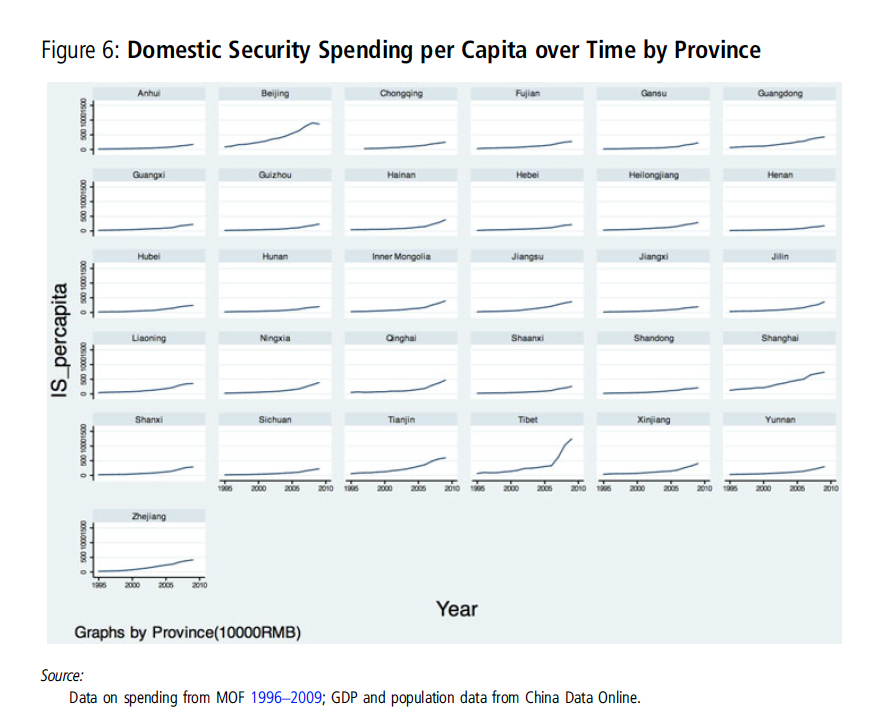A plea to any & all journalists writing on Tibet/Xinjiang and security/repression/surveillance in these areas:
Please *think* before you use "pioneered" & "replicated." Almost all uses of these terms I see are inaccurate. Thread: https://twitter.com/SheenaGreitens/status/1308439261050482697">https://twitter.com/SheenaGre...
Please *think* before you use "pioneered" & "replicated." Almost all uses of these terms I see are inaccurate. Thread: https://twitter.com/SheenaGreitens/status/1308439261050482697">https://twitter.com/SheenaGre...
In Xinjiang, Chen Quanguo did "pioneer" mass detention, internment camps, & forced residential re-education. He/XJ did NOT pioneer convenience police stations, grid management, CCTV, or general securitization. 2/
He also did not "replicate" his policies in Tibet. He dramatically intensified & expanded them. Re-education in Tibet is different bc of monasteries, geographic/demographic density, & probably the nature of contention (self-immolation vs. violent clashes/attacks). 3/
Even this story (& Zenz paper) make comparisons, but say explicitly in the final paragraph that the TAR does not have "extrajudicial internment." Extrajudicial internment facilities were a major escalation in Xinjiang in March 2017, after the CNSC meeting. 4/
The two regions& #39; policies have been different, & continue to be. This does not make policies less repressive. But equating the types of repression applied could lead us to misunderstand the CCP& #39;s logic. If we don& #39;t understand, effective policy will be harder. 5/
Also, we need to make sure we are careful about considering Tibet/Xinjiang security policies in the broader context of Xi Jinping& #39;s changed approach to domestic/internal security. Policies to these regions are not developed in a vacuum; the rest of China matters. 6/
Chen was in Hebei before Tibet. @Sarah_G_Cook has written about his experience with re-education of religious practitioners there (Falun Gong). He then tried "drip-style re-education" in Tibet, and when he first got to Xinjiang. 7/
https://jamestown.org/program/the-learning-curve-how-communist-party-officials-are-applying-lessons-from-prior-transformation-campaigns-to-repression-in-xinjiang/">https://jamestown.org/program/t...
https://jamestown.org/program/the-learning-curve-how-communist-party-officials-are-applying-lessons-from-prior-transformation-campaigns-to-repression-in-xinjiang/">https://jamestown.org/program/t...
I& #39;ve written elsewhere that as of late 2000s/early 2010& #39;s, both Tibet & Xinjiang were probably *under-securitized* by CCP standards -- largely for financial reasons. Securitization spending accelerated first in Tibet, and lagged in Xinjiang. See graph here: 8/
Things like grid management, convenience police stations, use of technology in public security work began to be applied in experiments in the urban east in the mid-to-late 2000s. Chen applied them to catch Tibet/Xinjiang up with much of rest of China, not "pioneer" them. 9/
This matters bc these policies are not "minority policies" that then get applied to the rest of China bc authorities realize they& #39;re useful.
Rather, their use in minority regions are fundamentally a subset of broader *internal security* policies. Important difference. 10/
Rather, their use in minority regions are fundamentally a subset of broader *internal security* policies. Important difference. 10/
One thing the CCP has understood from earliest days of its history is that central policies must be adapted to local conditions. So "replication" is almost always a misleading term; we see policy diffusion simultaneous with adaptation. This is an example. 11/
OK, I& #39;ll get off the soapbox now and go work on my book manuscript on this stuff. :) Thank you for coming to my Twitter TED talk. 12/
cc: @joshchin @evadou @lizalinwsj @ChuBailiang @paulmozur @catecadell @gerryshih @BethanyAllenEbr @MikeSmithAFR @billbirtles @jodifs @EmilyZFeng @emilyrauhala @ByChunHan @MJSCarney @TheJohnSudworth @meghara even tho you all know this already :)

 Read on Twitter
Read on Twitter


